Last-Minute NYC Holiday Gift Guide 🎁
We’ve created a holiday gift guide with presents for the intrepid New Yorker that should arrive just in time—


Banned in the United States since 1912 because of its purportedly hallucinogenic effects, absinthe finally became legal in 2007. Since then la Fée Verte (the Green Fairy) has made a gradual resurgence in popularity. Recently we had the chance to visit Doc Herson’s Natural Spirits, the first legal absinthe distillery in New York City, inside the Pfizer Building in Williamsburg, Brooklyn.
Founder Kevin Herson and his wife first started producing moonshine, whisky—and absinthe—for personal use in the basement of their ground floor, brown-stone apartment in Harlem in the winter of 2012. Kevin’s day job, which was in commodities, ended early and in order to save himself from boredom while waiting for his wife to come home, he converted the basement into a “man cave.”
“We were making whisky, moonshine, and then we said, let’s make absinthe—we enjoy absinthe. All of our friends loved it,” Kevin says.

Hoping to expand their underground distillery into a business, the couple then conceptualized the company in the winter of 2012, coming up with their recipes, brand name, and label—which was inspired by a doctors perscription for alcohol during the Prohibition years (so it’s truly just what the doctor ordered!). Kevin visited King’s County Distillery in Brooklyn Navy Yards, where he was advised to check out space at the Pfizer Building. Finding the space affordable and suitable for his distillery, Herson established the company in the Pfizer Building in the summer of 2014.
“Brooklyn is the epicenter for craft spirits,” Kevin says. And so, being able to base their facility in the Pfizer Building was ideal. The site’s location allows them to distribute their production of up to 500 bottles a month to liquor stores throughout the city, in addition to various bars and restaurants—and some places upstate.

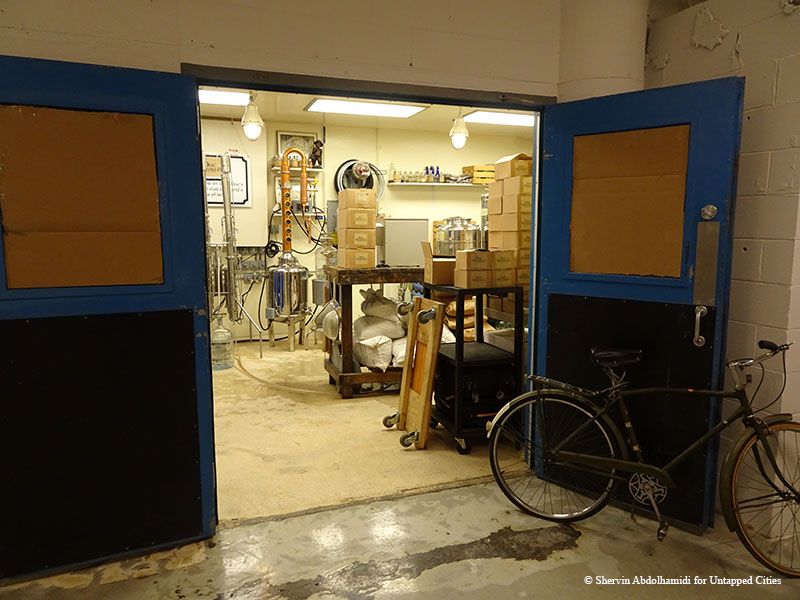
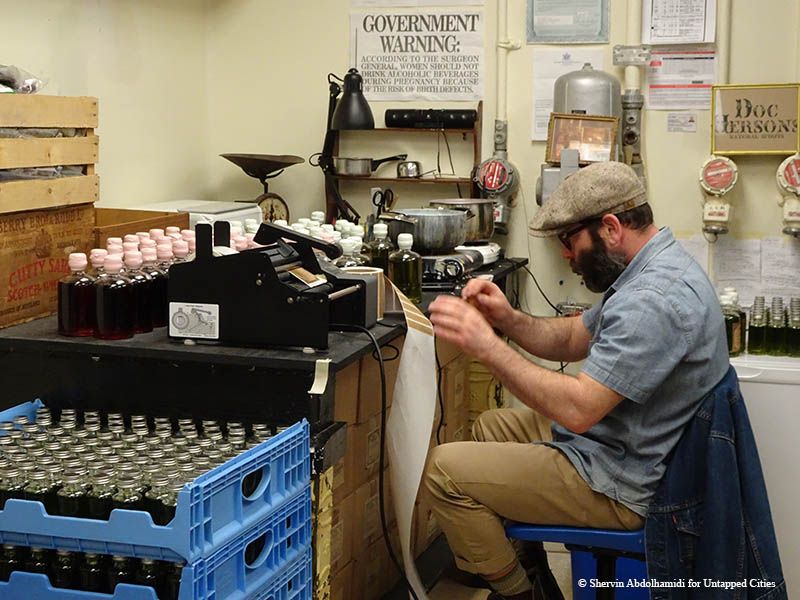
Coincidentally, the space where Doc Herson’s Natural Spirits produces absinthe was formerly a pressurized storage room for alcohol, according to Kevin. All throughout the building, new entrepreneurial businesses are juxtaposed with vestiges of the old Pfizer plant, which shut down in 2008. Many parts of the formerly abandoned factory building are still vacant, or under construction, with patches of plaster and plastic tarps lining some hallways and a lingering musky smell present in some parts. Yet, from small food producers like Mille-feuille Bakery and Brooklyn Foodworks, to Pratt Institute—which hosts its MFA program in the Pfizer Building—the building is undergoing a renaissance as an incubator space for small businesses.
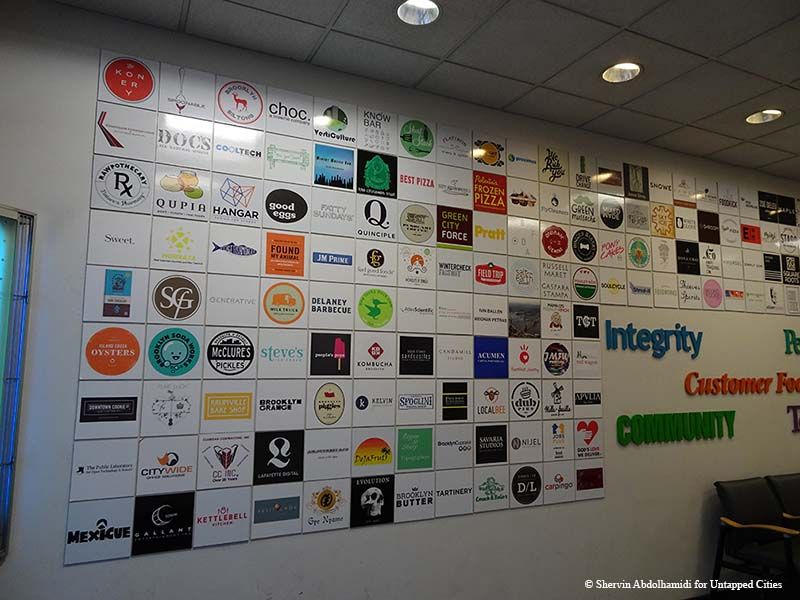
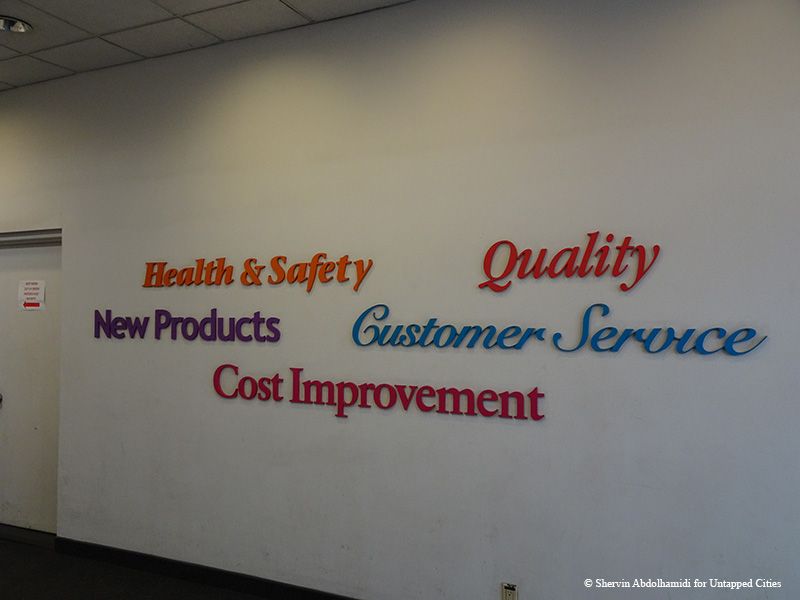
This is a remarkable trend in growth, given that the Pfizer building laid dormant after Pfizer Lab’s departure until only about five years ago. For more than 150 years the 660,000 square feet facility had been the Brooklyn site and original headquarters of one of the world’s largest pharmaceutical companies, until being shut down in 2008.
Pfizer was founded by German-American cousins Charles Pfizer and Charles Erhardt in 1849. Their original site was at the corner of Harrison Ave. and Bartlett Street, where the company started to gain success and grow, especially thanks to Santonin, the patented toffee-flavored intestinal worm remedy, and citric acid production, which garnered tremendous demand with the popularity of drinks like Coca-Cola, Dr. Pepper, and Pepsi-Cola. As the company grew, Pfizer expanded by buying the buildings on the block.
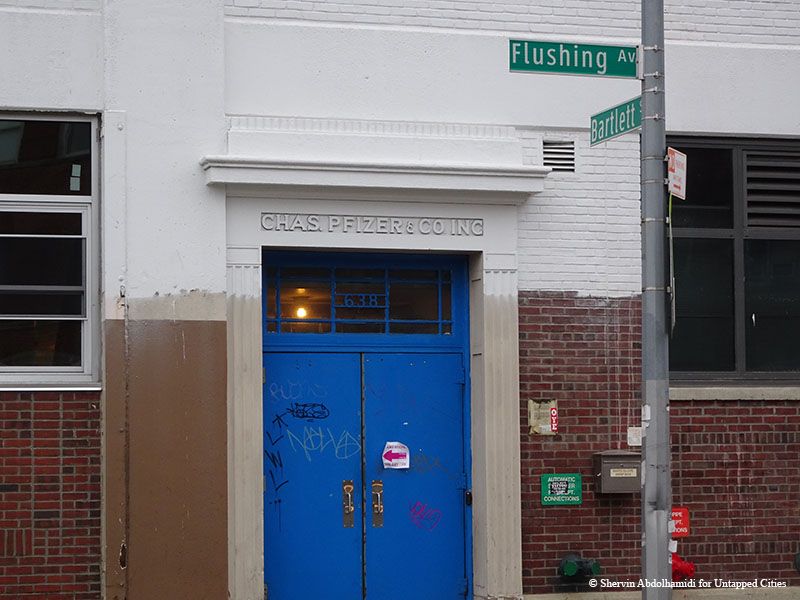
Pfizer kept its headquarters at this location, on the border of Williamsburg and Bedford-Stuyvesant until 1961, before moving it to Manhattan—the first signal of decline for the Brooklyn plant. Nevertheless, Pfizer remained committed to their origins. When the neighborhood started to deteriorate throughout the 1970s, with many businesses leaving the area, Pfizer held on to their site. Moreover, they made efforts to attract other manufacturers to the area and sought to improve the neighborhood. In the late 1980s, Pfizer renovated a vacant building adjacent to their factory and built a school, which they leased to the city for one dollar a year.
However, these measures were unable to account for the high costs of operating in the city. Global competition and the rise of generic drug brands were taking a substantial toll on the company. In 2007 the company finally succumbed to economic and fiscal pressures and announced the closing of its birthplace, causing 600 people to lose their jobs.
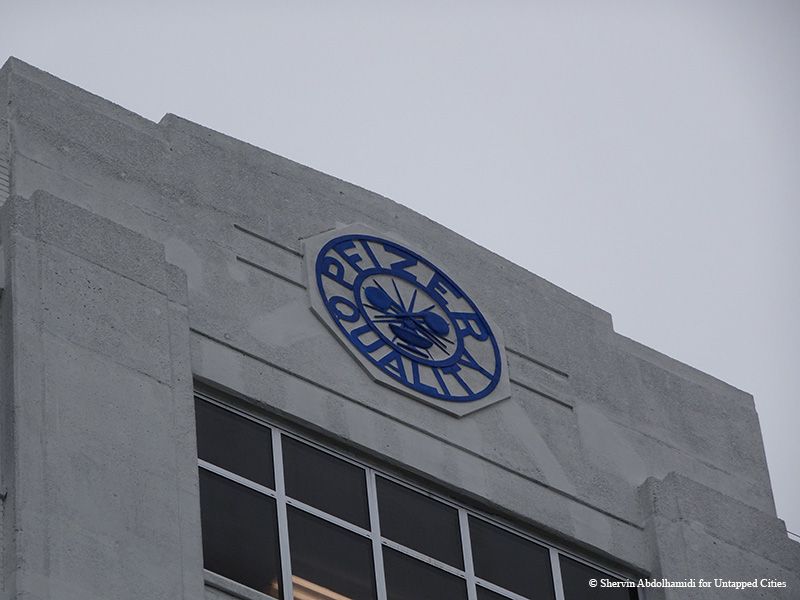
Seeking to stay true to their commitment to the neighborhood, Pfizer intended for site to be converted into a mixed-use, mixed-income complex. However, State Assemblyman Vito Lopez, at the time pushed to have the building renovated into 1,700 affordable housing units. After two years of struggle, Pfizer finally reached a deal with Acumen Capital Partners, who bought the facility for $26 million with the intention of reintroducing local manufacturing into the building.
The affordable space was immediately a hit among entrepreneurs, especially artisan food businesses. Acumen has had a history of reusing former industrial buildings. In 2008 the company bought Standard Motor Products building in Long Island City, renovating for numerous usages, including a rooftop farm run by Brooklyn Grange.
Today the former factory is home to over 100 startups and businesses, from small-batch pickles to hand-churned ice cream—and even an absinthe distillery.
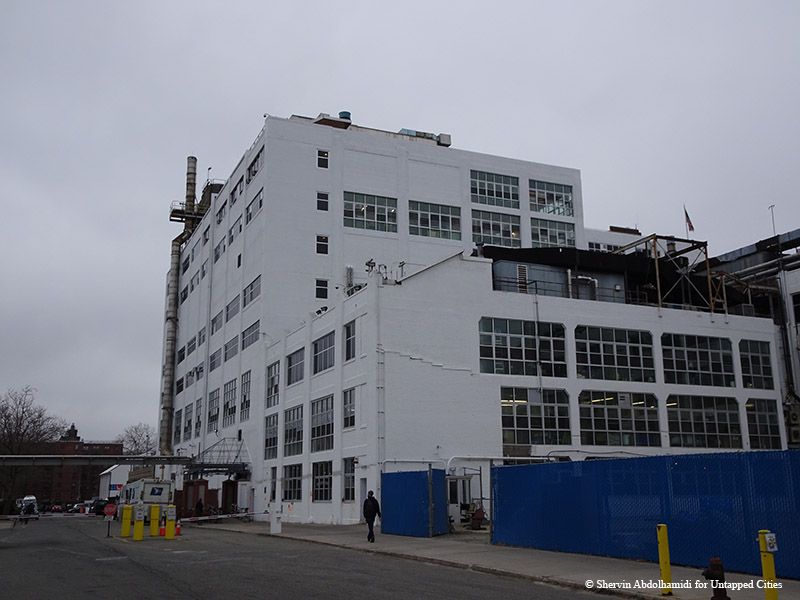
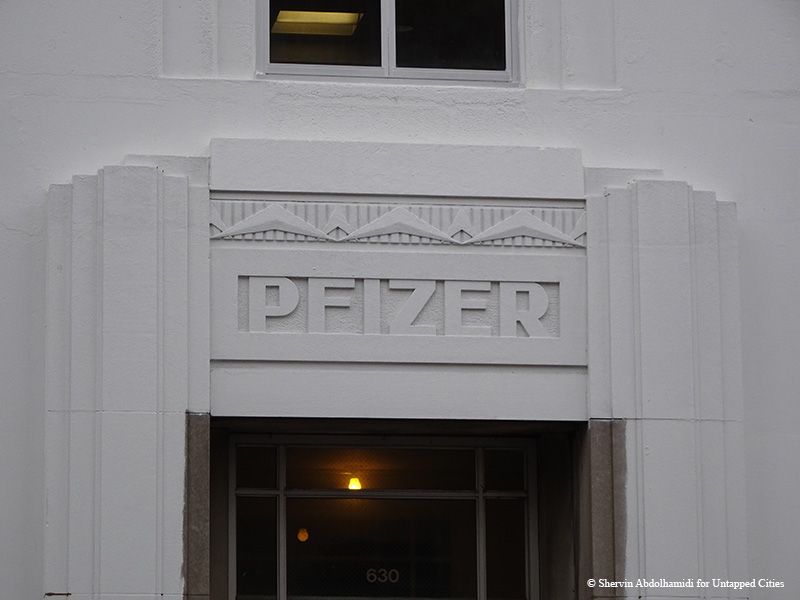

Next, check out 10 Distilleries to Visit in Brooklyn (and One in the Hudson Valley), the Top 10 Secrets of the Brooklyn Navy Yard and 10 Fun Facts About Williamsburg. Also read Inside Brooklyn’s Former Pfizer Plant and Its Transformation into Manufacturing Hub and 8 of NYC’s Rooftop Farms.
Subscribe to our newsletter